Bicycles have been a big part of our society for a while now; almost everyone in the First World has learned to ride a bike at some point. We all remember our first lessons from when we were kids, and of course, our first awesome wipeout. These are our own personal biking milestones of course, but those two-wheeled devices (that are often both our favorite tool and worst torture device, depending on how well we can steer) have been around for 200 years, and they have quite a few milestones of their own.
58 Milestones From Bicycle History You Must Know
So in celebration of all those successful stunts, scraped knees, and epic crashes, below are 58 of the greatest milestones in biking history.
You can add this infographic to your website by copying and pasting the HTML code below
It was a success, which saw some popularity in both Germany and France.
Later on this bike, which became known as the Draisine, shifted from its common use to versions that were designed specifically to be used on railroads (which meant 4-wheeled versions), however despite that, this bike was the beginning of cycling’s 200-year 2-wheeled reign.
Karl von Drais on the first bicycle, illustration from Wikipedia
The name Boneshaker comes from the fact that they were incredibly uncomfortable. This is because they were hard to control and shakey, with a stiff frame and wooden wheels with iron tires. Ouch.
These bikes are easily recognized by their enormous front wheel and tiny back wheel.
The Penny-Farthing is most likely the first bicycle to actually be referred to as such in its time period. That, combined with its relation to the birth of sports cycling and its unique design makes it an important cornerstone of cycling history.
The Penny-Farthing was popular for decades following its inception.
In 1872, it was first manufactured in Britain (where the cycling market moved to in the 1870s), and In 1878 inventor William Henry James Grout created a portable version that could be easily assembled and disassembled as needed.
Two men riding penny-farthings in 1886, photo from Wikipedia
The Oliver brothers were wealthy businessmen, and combined with Michaux’s expertise, they made a fortune off of the bicycle crazy of the 1860s with their company, Michaux et Cie (meaning Michaux and Company).
However, it doesn’t just belong in cycling history; the Roper Steam Velocipede is also regarded by some as the first motorcycle, though whether it constitutes a motorcycle is a matter of debate.
The mind behind this bike is Sylvester Roper, a major name in the world of steam engines and vehicles.
It’s also the year of the first official bicycle road race. The race route was from Paris to Rouen, a distance of 113 km, and it was won by cyclist James Moore.
France pioneered sport cycling along with many other European countries, and even today they host some of the biggest cycling competitions in the world.
From riding one down a mountain, up a ramp, or across a tightrope, it seems there’s no end to the life-endangering stunts you can get up to with a one-wheeled bike.
Essentially without the chain, you could only pedal the front wheel, leaving the back wheel to roll from your momentum. As you can imagine, it made things like starting, stopping, and even turning a challenge.
The bike chain, patented by Henry J. Lawsen, fixed all of that. Though the design has had some evolutions, we still use bike chains to this day.
Founded in Rhode Island, USA by Kirk Monroe and Charles Pratt, it was huge, with its membership soaring all the way to over 103,000 people in 1898. The league advocated for improving road conditions. They even went so far as to found the Good Roads Movement, which is responsible for Good Roads Magazine.
All good things must come to an end, however, and in 1900, the League’s membership plummeted by 25,000, and by the time they dissolved in 1902, they had only around 8500 people still remaining.
The league returned in 1939, but had poor membership right from the start, and never made it over 1000 people before they dissolved again in 1955.
Finally, in 1965, they were revived once again, where it saw moderate success. They changed the name to League of American Bicyclists in 1994, and are still around to this day, with around 20,000 paid members and approximately 300,000 affiliated with them in other ways.
Marketed as a safer bicycle for regular people, it was a big hit amongst the cycling community and was a big factor in creating many women cyclists.
Since the safety bike was lower to the ground and its wheels were the same size, braking was safer, and crashing in general was not nearly as dangerous.
Gottlieb, one of the pioneers of the internal combustion engine, was happy to show off his motorcycle, the Reitwagen, to the world.
In this year, the British army also began using cyclists for scouting missions.
His journey began in San Francisco on April 22, 1884; a place he finally returned to in January of 1887.
Later on in the same year, the Raleigh Cycling Company was founded. Raleigh Cycling is known for a few of the other entries on this list; they’ve made their mark on bicycle history.
Thomas Stevens on his penny-farthing, illustration from Wikipedia
Through testing, he discovered that his new style of tire was superior, and began working towards getting it patented.
Cyclist Willie Hume proved that Dunlop’s pneumatic tires were superior in every cycling event at the Queen’s College Sports in Belfast.
Hume went on to win almost every cycling event at a similar event in Liverpool, undeniably proving the value of Dunlop’s invention.
However, it wasn’t until 1889 that the design was patented by Daniel Stover and William Hance.
In the 1890s, Cycles Alumnium started the mass production of aluminum bikes, allowing the design to spread.
Tandem bicycles quickly caught on as a cute gimmick for couples and stayed popular until WWII, when they nearly disappeared from the market entirely.
In the 60s and ’70s, Tandem bicycles started making a comeback in the UK and they even appeared in some cycling sporting events. These days, it’s rare but not impossible to find one in public.
This was also the year of the first international, Six-day bicycle race. It was held in New York’s Madison Square Garden, with cyclists from all over the world competing.
The two-man team style that is now standard in Six-day cycling events is called a Madison event since it was developed at this very race.
They did ok on the market, but the real interest in the idea came from the army; various military powers had begun using bicycles for scouting missions, so the need for a more portable and easy-to-carry bicycle was great.
Fun fact: in this same year, the famous Wright Brothers, as in the fathers of aviation, started a cycling company based in Ohio.
The wager was to see if a woman could take care of herself and complete just a journey; and Annie Londonderry proved that with ease.
She became known in history as a powerful symbol for feminism, proudly declaring she could do anything a man could do; a revolutionary idea at the time.
A small-framed electric motorcycle (or more properly classified as an electronic bike or e-bike), this thing had 100 amps of power pumping out of its 10-volt battery to keep it running.
There were several events; including track cycling, which was held in the former Neo Phaliron Velodrome in Athens. There was a 10,000-metre race, a 100-kilometer race, a road race, and a 12-hour race that only had two competitors.
Greece took the gold in the road race, France took it in the Sprint, Time trial, 10 km, and 100 km races, and Austria won the 12-hour race.
In other words, before this invention, bicycles had to be pedaled constantly, making it nearly impossible to coast.
Well, he might not have been entirely correct, but Mile-A-Minute Murphy was in fact, the first person to complete a mile in under 60 seconds on a bicycle.
He did this by closely following a moving train in order to take advantage of the slipstream effect.
Though his efforts resulted in him getting serious burns and having a spectacular wipeout at the end of the minute, he successfully traveled a mile in 57.8 seconds, AND he surpassed the traveling speed of the train he was following behind (which is also why he crashed directly into it and nearly died).
Unlike a traditional bike where the rider sits upright or leans forward slightly, a recumbent rider leans back in a more relaxed position. Recumbent bikes have a large seat and a backrest and are designed to be very comfortable.
You might think these bikes are simply impractical or slow luxury bikes made for taking it easy, but you’d be wrong.
Actually, these bikes are aerodynamic and capable of great speeds. In fact, a recumbent bicycle currently holds the world speed record for bikes.
Held annually, it is the most prestigious cycling race in biking history, consisting of multiple stages and taking place across 23 days, usually in July.
The first Tour De France, held in 1903, attracted nearly 80 entrants, and was won by Maurice Garin. The race consisted of 6 stages across a length of around 2428 km and took place over 19 days.
This was also the year that internal hub gears were invented, to keep the gears safe from the elements and properly lubricated.
Maurice Garin wins the first Tour de France, photo from Wikipedia
Vivie’s invention was met with much resistance in the cycling community for years until professional rider Edouard Fischer, on his gearless bike, went up against the less experienced Martha Hesse using a three-speed version of Vivie’s derailleur. Hesse’s victory proved the derailleur’s supremacy.
The credit given to Vivie has been the subject of some controversy; some believe Vivie simply improved upon an invention that already existed.
Whether he really is the father of the gear system or not, however, his invention and the work he put into marketing it allowed the gear system to spread at an incredible pace.
It seems natural to us now for kids to hop on their bikes and ride around; after all most of us did exactly that when we were children. But before the 1920s, biking was a strictly adult activity.
However these days, almost every kid in the West is on a bike during the summer.
The company was originally founded by Shozaburo Shimano, who became fascinated with bicycles from a young age. The company quickly spread from Japan to the global market under Shozoburo’s leadership.
The company is run today by his descendants; following his death in 1958, his sons took over and continued Shimano Inc.’s steady climb in the world’s market.
The original designs for velocars were based on recumbent bicycles. In fact, some velocars were simply recumbent bikes with full frames/shells around them.
Most locals have 3 or 4 wheels. These days, velocars are fairly rare, but they were well-known in Mochet’s day.
Early Fantom velomobile, photo from Wikipedia
The quick release was created by Tullio Campagnolo, an Italian cyclist who made it to allow for quicker gear switches. This was because to switch gears without a derailleur, you would have to remove the wheel and change gears by hand.
The quick release made the process much faster for cyclists, changing the game for cycling races.
Cruisers have an upright seat for good posture, and stylish frames, and they (usually) only have a single-speed drivetrain. These bikes are made heavy and have balloon tires, making them slow, but durable.
When these bikes came out, they were extremely popular, especially among casual cyclists. They dominated the market until the 1950’s and made a comeback in the 90’s.
To this day, many people prefer a stable cruiser bike when they’re going for a casual ride.
Recumbent bicycles now race under the Human Powered Vehicle Association (HPVA).
It’s not exaggerating to say that allowing derailleur gears in the races, which enabled riders to change gears without removing the wheel, revolutionized professional cycling races forever.
A true sign of the times, the Radio Bicycle was a popular gimmick. It’s not hard to see why; being able to listen to your favorite radio station while going for a nice leisurely ride can only improve the experience, right?
Unfortunately, with the influx of European bicycle models in the 60s, the popularity of the radio bike was overshadowed, and the radio bike ended up lost in obscurity.
Huffy Radio Bicycle, photo from Wikipedia
Though the first official BMX race was held in 1956, the sport didn’t catch on until the 70’s.
Founded by Alex Moulton, who found himself unhappy with the currently popular designs for bicycles, founded his company to provide a new style; small wheels with high-pressure tires for better acceleration, good suspension made for comfort, and a new style of frame, which is now known as the F-frame.
The Moulton Bicycle Company’s design became a symbol of the 60’s and inspired many other companies to respond with their own small-wheeled bikes.
Modern Moulton bike, photo from Evans Cycles
In 1968, they created the coolest-looking children’s bike to date: the Raleigh Chopper.
This thing was like Baby’s first motorcycle in design; a recumbent-style seat, a chopper motorcycle-style handlebar, and a stylish frame. This was the must-have kid’s bike of the early 70’s.
The success of the Raleigh Chopper more or less saved the company from financial ruin, as it dominated sales.
Though it was criticized as being very unsafe (the bike itself was unstable and prone to crashing), it is remembered as one of the staples of 70’s culture.
Modern Raleigh Chopper, photo from Evans Cycles
In 1970, Charlie Kelly and Gary Fisher came up with a bike built for hard-core terrain. It had heavy-duty wheels and a suspension system, allowing it to climb steep inclines, ride over logs, rocks, dirt roads, and anything else you’ll find on a mountain.
To this day, mountain biking is popular as a sport. It’s a fairly extreme sport, as mountain bikers are prone to crashing or wiping out in spectacularly painful ways, particularly for those who ride on more rugged terrain.
For starters, titanium is a very strong and resilient metal, capable of withstanding a lot of abrasion. It’s also got an excellent weight for a metal of its strength.
However, titanium is expensive and difficult to work with, which makes the cost of production high. As a result, titanium bikes are notoriously expensive. Some would argue though that it’s simply the cost of quality.
In this same year, Chester Kyle and David Gordon Wilson began the modern recumbent movement.
Their journey took them 18,020 miles around the globe, finally completing their journey on August 27th, 1975. They were the first couple to ride around the world on a tandem bicycle.
The world’s first international Human Powered Speed Championships were also held in this year.
The event was organized by Charlie Kelly and Gary Fisher.
Fast Freddie later went on to beat the record two more times, in 1989 and in 2006.
The 15-speed bike was popular, its first shipment selling out in under a week.
The International BMX Federation was founded in this same year by Garrit Does, a professional motocross racer and a major pioneer in the European BMX community.
It was only a matter of time before a world championship took place. The first world championships were hosted by the IMBXF in 1982, and won by Greg Hill.
Though the IBMXF exists, the UCI is the authority on BMX racing and its official rules, and as of 1996, they have hosted the annual BMX World Championships.
The devices first appeared in 1983, and today they continue to be a popular cycling accessory.
This was also the first year for the European Human-Powered Championships for Human-Powered Vehicles.
There are multiple events at the UNICON, ranging from track races of varying distances, time trials, unicycling cross-over sports like basketball and hockey, cross-country, and artistic stunts/displays.
UNICON is held almost every 2 years, usually in the summer. The most recent one was in Montreal Canada, and the next UNICON is scheduled to appear in San Sebastian, Spain.
However, in 1987, Paul Turner, founder of the now-defunct cycling company RockShox, made a big improvement on the existing models with his full-suspension mountain bike.
Bike suspensions were Turner’s thing, and his full-suspension mountain bike was just one of his cycling babies. Though the industry was less than impressed when he first unveiled his work, the full-suspension bike quickly became known for its capabilities.
Like the hall of Fame for any other sport, a big part of the MBHOF is recognizing the biggest stars in the community for their achievements and contributions.
Those inducted are people who have either achieved legendary status in the sport, beating a world record, earned a spot in mountain biking history, or revolutionized the community in some way.
The 1988 inductees are Joe Breeze, Steve Cook, Charlie Cunningham, Gary Fisher, Charlie Kelly, Murdoch, Joe Murray, Jacquie Phelan, Tom Ritchey and Mike Sinyard.
Many other countries followed suit, reducing death and serious head injuries by a significant number. The only problem is that ordering cyclists to wear a helmet decreases the number of people cycling, so it might not be in our best interest to make helmets mandatory.
The device was originally intended for racing bikes, but now many types of bicycles have a similar system in place.
A novelty device, the Conference Bike is often used in tourism and team-building exercises. In fact, Google has 9 of them at their headquarters for employees to use in various activities.
It’s made a name for itself as the silly gimmick bike, and it has a lot in common with the party bike.
Though the gear shifts are faster, it is not entirely agreed upon in the cycling world if electronic ones are objectively better.
The advantages are clear; faster gear-shifting, less overall maintenance required, easier controls, and a reduced shock on drivetrain components.
However, there is no way to manually override the system when something like dead batteries come into play. Also, the electronic systems are expensive and many variations have been recalled because they are unreliable.
Disc brakes are known for having a high resilience to the elements and conditions, and they are highly compatible with both front and rear suspension systems, which is why they are the go-to choice for mountain bikes.
In the women’s, Italy’s Paula Pezzo took the gold, Canada’s Alison Sydor went home with silver, and the USA’s Susan DeMattei claimed bronze.
In the men’s, the gold went to the Netherlands’ Bart Brentjens, Switzerland’s’ Thomas Frischknecht won the silver and France’s Miguel Martinez took the bronze.
Lance Armstrong was the Cristiano Ronaldo of the cycling world. However, he has recently had a major fall from grace after it was revealed that he was doping to get an edge on his competition.
France’s Anne-Caroline Chausson and Laëtitia Le Corguillé won gold and silver with Jill Kintner of the USA winning bronze in the women’s race. In the men’s, Māris Štrombergs of Latvia claimed gold, with Mike Day and Donny Robinson from the USA earning silver and bronze.
The idea behind car-free cities is to reduce pollution emitted by cars; car pollution is one of the biggest causes of pollution in the world, and China especially has been known for its severe smog problems.
Cars are not entirely banned in The Great City, there will be space for them, and electric-powered public transit will be allowed. However, the idea is for cars to be completely unnecessary.
Using a recumbent bicycle he beat the record in Battle Mountain, Nevada, on a 200 metre stretch.
Conclusion
Well, that’s all! At least for now! fascinating how far cycling has come, isn’t it? Let me know what you think about these facts in the comments below! Do you have anything else to add?
- 15 Best Bikes For Heavy Riders
- Biking Culture And Traditions Around The World
- The History Of Ice Biking And Winter Cycling
Should you have any questions or require further clarification on the topic, please feel free to connect with our expert author Dillon Hiles by leaving a comment below. We value your engagement and are here to assist you.


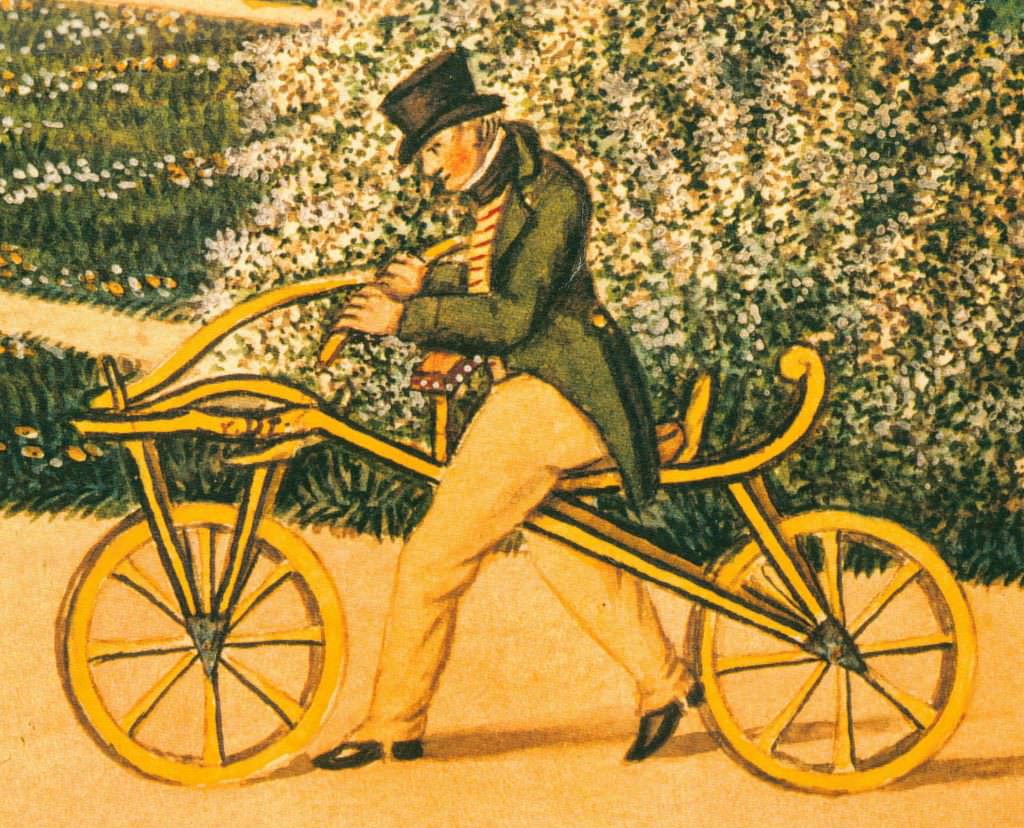
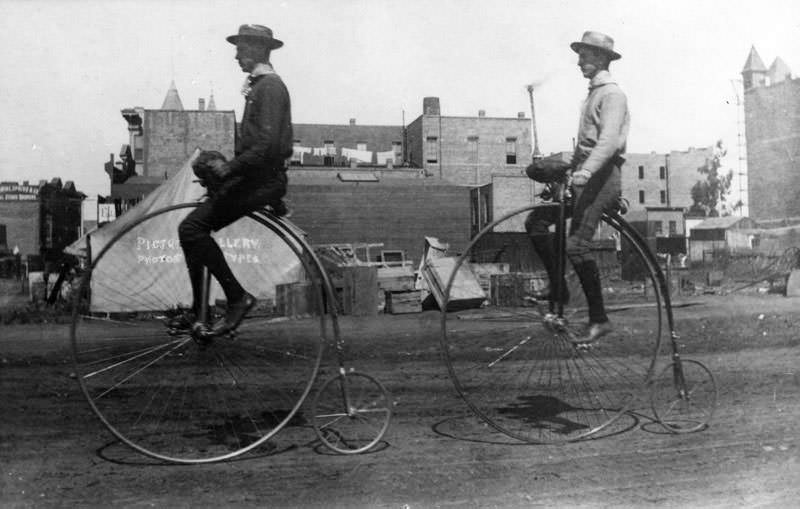
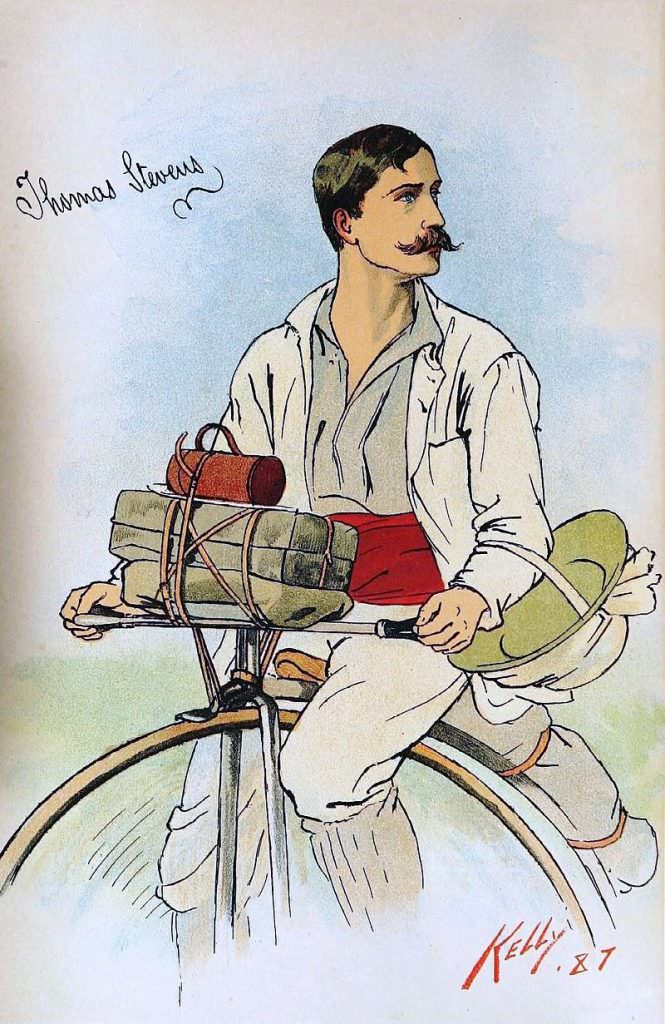
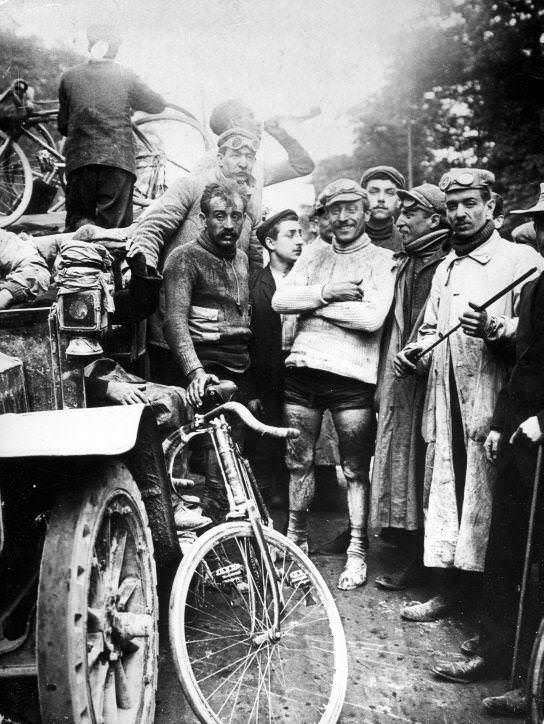
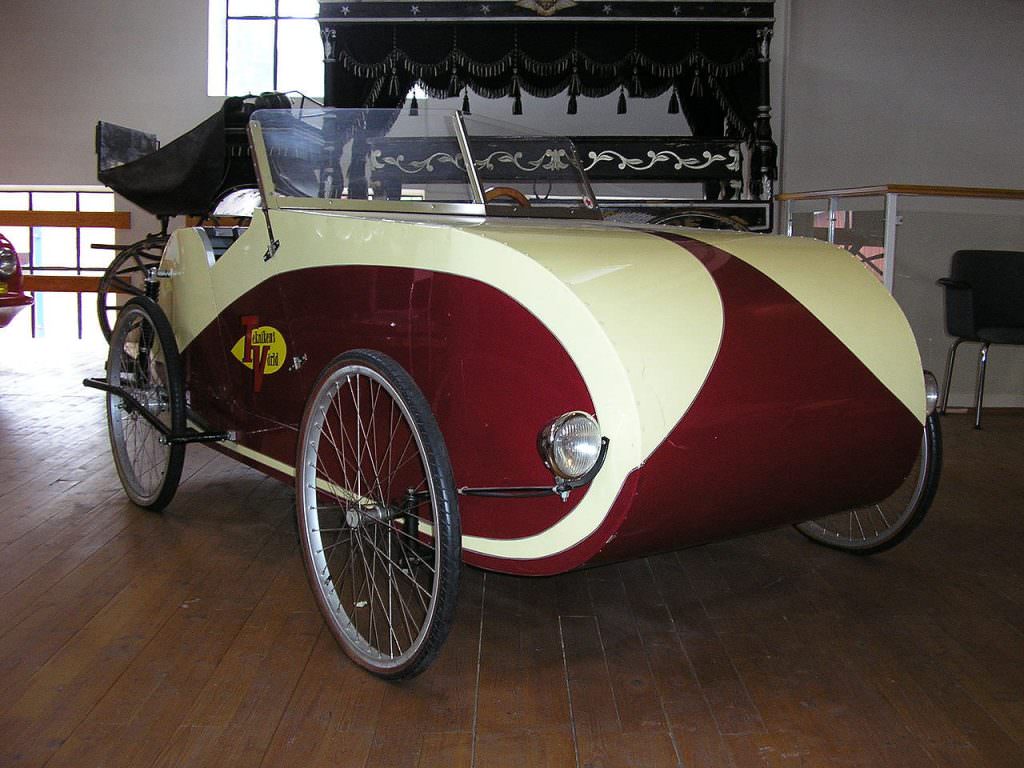
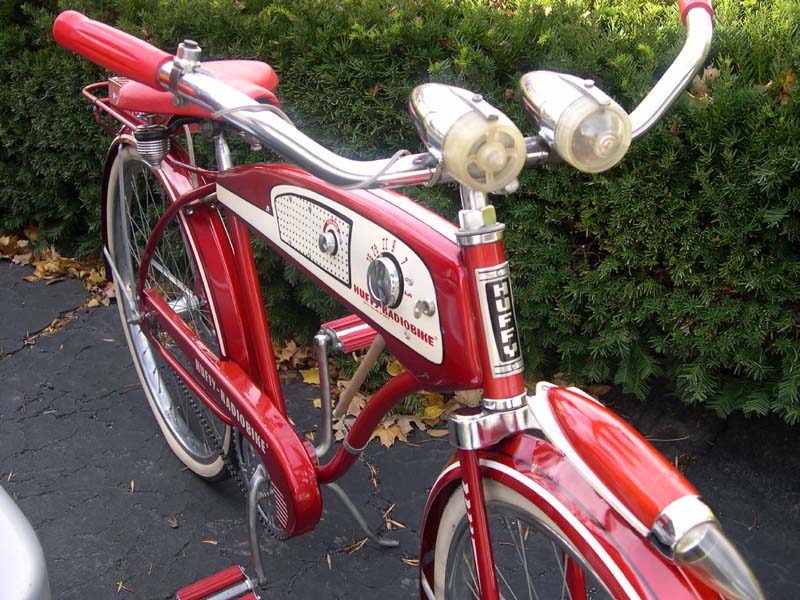
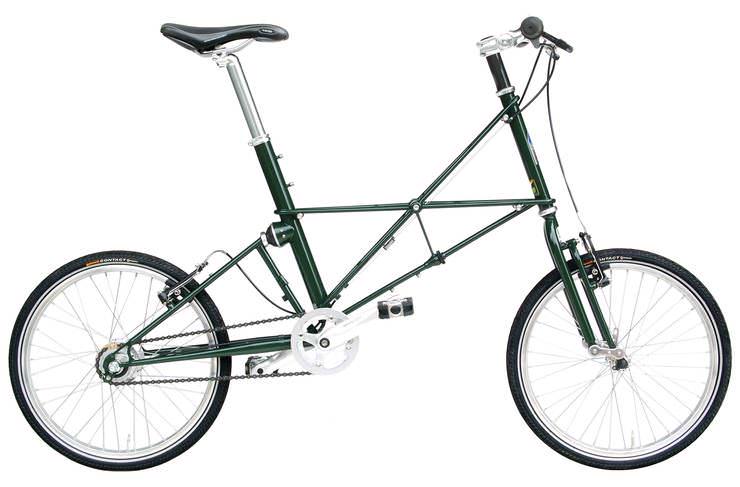
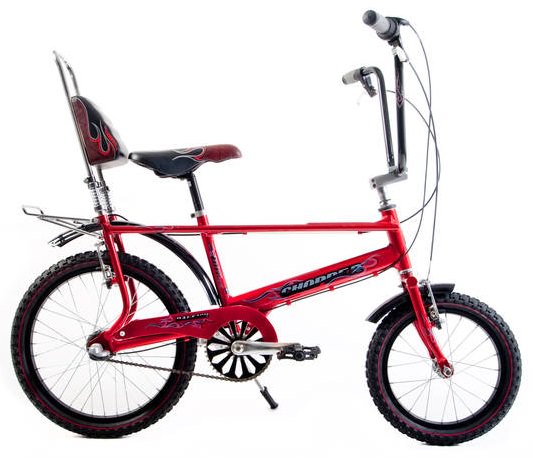
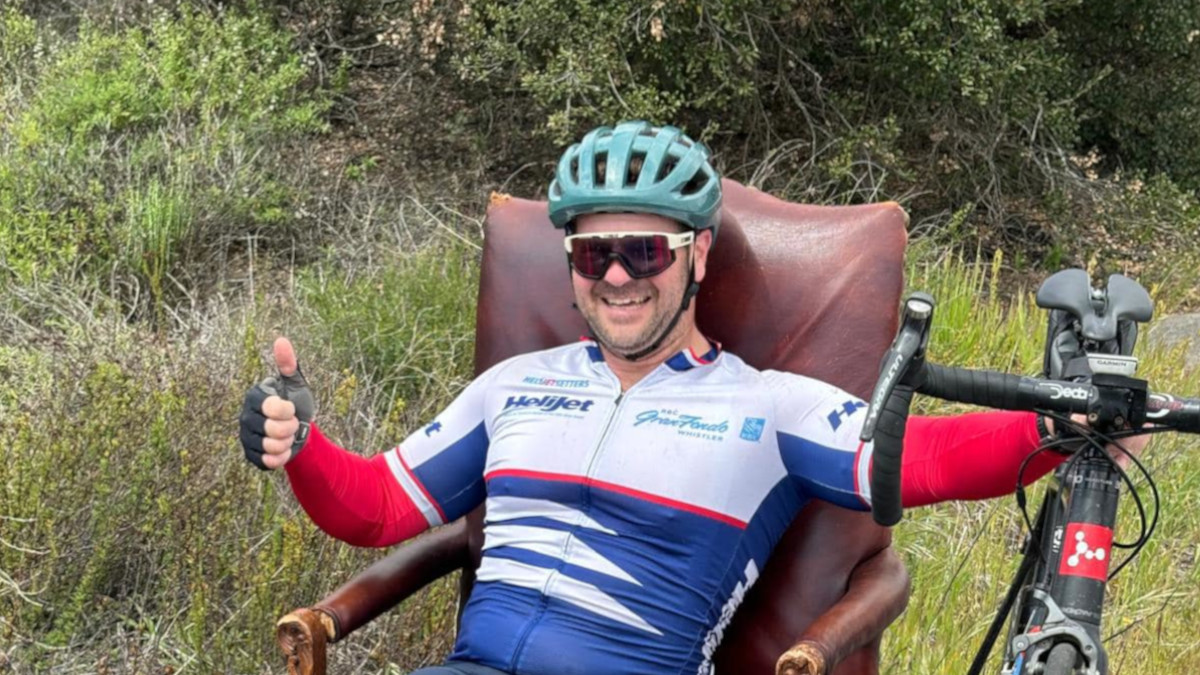
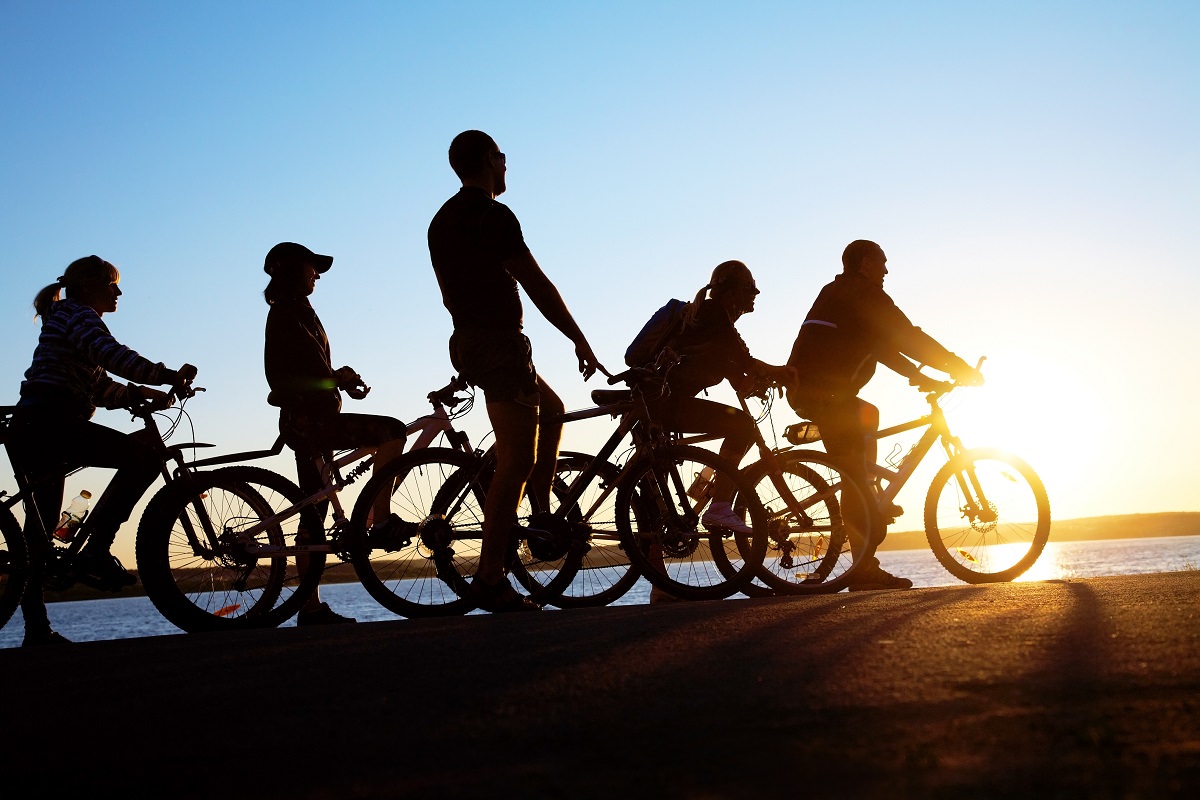




10 thoughts on “58 Milestones from Bicycle History You Must Know”
I can appreciate a lot of enthusiasm went into producing your site, but you appear to have consulted some unreliable sources of information in the course of compiling it. I don’t really know where to begin, but the following contentious issues appear in just the first 14 noted events (I declined going any further):
1858 – The two-wheeled velocipede with cranks and pedals driving the front wheel that became known as the “Boneshaker” was not invented until the 1860s in France.
1866 – James Starley (not Stanley) did not manufacture bicycles until late 1868. He did not invent the high wheel bicycle – the French are credited with evolving the “Boneshaker” to incorporate a larger front wheel to facilitate longer distances travelled for each rotation.
1868 – The Michaux firm made several thousand bicycles under the financial oversight of the Olivier brothers, but not by “mass production” in the generally understood use of the term. That came much later in America.
1872 – Not true. The French not only developed the high wheeled bicycle before the English, but James Starley produced bicycles in the UK from 1868 at the Coventry Machinists’Co Ltd in Coventry. The “Ariel” bicycle was produced in 1871 following improvements patented by James Starley and William Hillman the previous year.
1879 Lawson did patent his chain-driven bicycle that year although this was actually anticipated by earlier patents and chain-driven bicycles.
1888 – Dunlop did not invent the pneumatic tyre. He re-invented it. It had been patented in 1845 by RW Thompson and generally forgotten about. When it was remembered again it led to Dunlop’s patent being revoked.
However, I probably would have made similar mistakes had I not found the reliable sources and the company of fellow searchers after the facts which can be found in the Veteran-Cycle Club. The V-CC was formed almost 60 years ago and has, over the years, amassed an enormous amount of research material in the two libraries it owns, in the Mark Enthusiasts own databanks and in the many publications produced. The publications are three: News And Views which deals with the very latest matters of the club, where members can post questions about mystery cycles and components and others may be able to respond later, The Boneshaker magazine which includes more ‘finished’ papers and photos of research findings and the John Pinkerton Memorial Publications, a series of printed books that cover all aspects of cycling history, cycles, riders and components.
The V-CC has a three word motto: Researching, Restoring and Riding.
It has well over 2,000 members worldwide and costs very little to join. It is run by volunteers, there are no paid positions within the club.
In all cases we try to urge general enquiries to use the club’s resources, to join the club and join in, the history of cycling and cycle manufacture is so vast a subject there will never come a time when we know it all, so, if you can, please come and join us!
Great and insightful comment, thanks.
It seems like there is a lot of discussion going on about when things happened in cycling history and how was responsible for what inventions. Even the bicycle museums seems to disagree about these things.
To make the graphic, we used the sources listed at the bottom of the graphic. They might of course be wrong about some of things they write about, just like any other historic source might wrong about some of the things they write about.
Your efforts to produce this website are appreciated. I will concentrate my comments on the early history, which at a first glance seems to include the important milestones. However, the accuracy of the information given is sometimes questionable but this is understandable since many of the dates and details surrounding the key inventions associated with the bicycle (and motorcycle) are contentious. In fact when this is the case, you might want to point it out as we do, for example, on
http://www3.imperial.ac.uk/controlandpower/research/motorcycles/history/thevelocipede
It might also help if you use sources beyond online material on wikipedia, such as a number of books that cover the history of the development of the bicycle. Some suggestions are given on
http://www3.imperial.ac.uk/controlandpower/research/motorcycles/history
but there are surely more.
I hope I have been of some help.
Thanks a lot for your comment. I totally agree that many of the dates and events are contentious.
We based the graphic on sources we could find online, but I’m sure there are lots of books etc. that could also be used as valuable sources.
best reviews at this post only on cycleshopguru
Thankyou
Thanks for the effort you have put in to create this. I am always reading and informing myself, yet, I would not claim myself to be an expert in the field!
It is my greatest wish to be well informed and every bit of information out there helps!
Hi,
in my opinion, the invention of the Pedersen bike by danish Mikael Pedersen in 1893 in Dursley/UK is missing in the history board – I think, this an impotand milestone in the history of the bicycle.
Thank you and best regards,
Stefan
Really enjoyed reading through this timeline . As a result I dug out a copy of bicyles and tricycles an elementary treatise on theie design and construction written by Archibald Sharp B.S.c . His book was published in 1896 . It shows a picture of the first disc wheel for a bicycle.
https://www.flickr.com/photos/74418119@N00/48582203021
Regards Paul.
Knowing how old your Raleigh bike is will help you be assured of its longevity and durability. The serial number is the easiest way to determine the age of your Raleigh bike and the vintage Raleigh bike value. You can refer to bike organizations like the National Cycle Club, the National Cycle Archive, etc. that can provide information about Raleigh bicycles. These institutions can help you determine the right age of your Raleigh bike. You can check for specific parts like the frame, suspension forks, and friction shifters to determine the correct age of your Raleigh bike.
Hey… You need to complete your panel and stories, by; the gravel bike (tire, handlebar…), ebike… and comeback in the 2022.
Thanks for your good job on the important world of cycling history 🙂